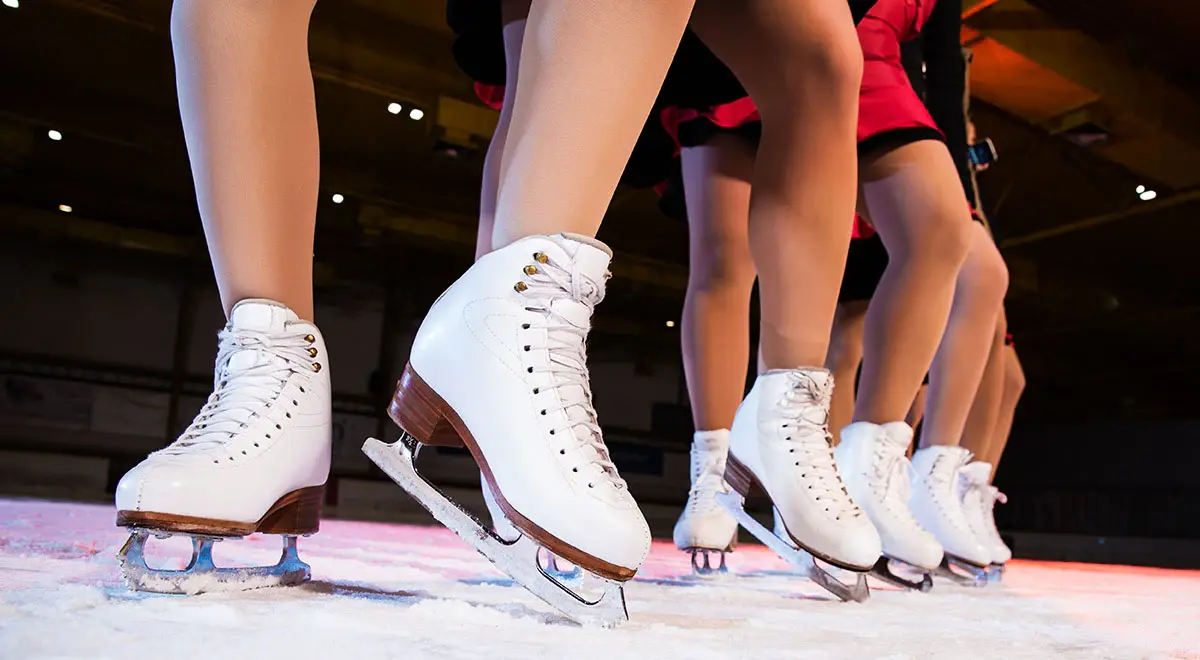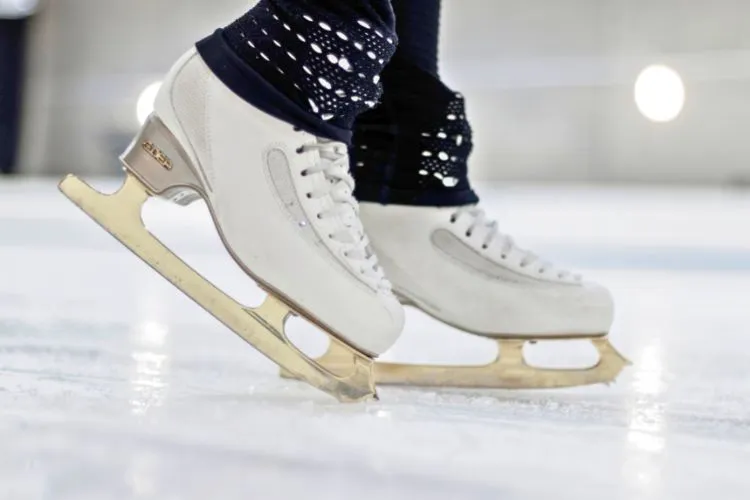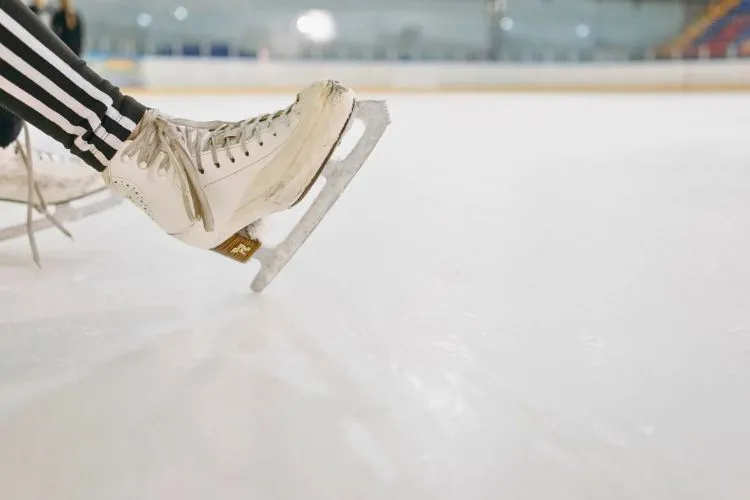Ice skating, a beloved activity by many, requires not only skill and passion but also the right equipment. High-quality ice skates are essential for both recreational skaters and competitive athletes.
One common question among skaters is, “How long do ice skates last?” The answer depends on various factors, including the type of skates, their usage, and how well they are maintained.
This article aims to explore these aspects to give skaters a better understanding of the lifespan of their skates and tips on extending it.

How Long Do Ice Skates Last?
On average, ice skates for recreational use can last between 5 to 10 years. However, for those who skate competitively, replacing skates more frequently may be necessary to ensure optimal performance.
The lifespan of a pair of skates is influenced by several factors, which we will delve into in the subsequent sections.
Key Factors Influencing Ice Skate Longevity
Type of Skates
Different types of skates may have varying durabilities. For instance, figure skates and hockey skates are designed differently to cater to their specific sporting needs.
Speed skates, used in ice speed skating, also have unique construction. Understanding the build and intended use of these skates helps in gauging their longevity.

Material Quality
High-quality materials can significantly extend the life of ice skates. Skates made from durable leather and strong metal blades resist wear and tear better than those made from lower-quality materials.
Frequency of Use
How often skates are used plays a crucial role in their wear and tear. Frequent use can lead to quicker degradation of both the boot and the blade.
Maintenance and Care
Routine maintenance can greatly extend the life of ice skates. Proper care includes regular blade sharpening, drying the skates after use, and correctly storing them.
Skater’s Technique
The technique of the skater also affects how the skates wear down. Aggressive or poor skating techniques can cause more stress on the skates, leading to faster wear.
Signs It’s Time to Replace Your Ice Skate
Skates showing permanent blade damage, boot breakdown, or providing poor support may need to be replaced. These signs not only affect performance but could pose safety risks.
Maintenance Tips to Extend Skate Life
- Proper Blade Care: Regular and thorough blade sharpening and using blade protectors can help maintain the blades. Sharp blades perform better and are less prone to damage.
- Boot Care: The boot’s integrity is as crucial as the blade’s sharpness. Skaters should ensure their boots are dry and properly stored away from moisture to maintain their shape and support.
- Avoiding Moisture Damage: Moisture is the enemy of ice skates, leading to rust and degradation. Developing a routine to dry and protect skates from moisture extends their lifespan.
- Regular Inspections: Periodic inspections for wear and tear allow for timely repairs and adjustments, avoiding more significant issues down the road.
- Professional Fittings and Adjustments: Visiting a professional for skate fittings and adjustments can ensure that skates are in top condition, maximizing their lifespan.
You may also find useful: Types of Ice Skates | How Tight Should Ice Skates Be?
Choosing the Right Skate Size and Fit
Selecting the right size and fit for your ice skates is crucial, not only for comfort but also for maximizing performance and extending the lifespan of the skates.
Ice skates that fit poorly can lead to decreased control, foot pain, and even injury, all of which can degrade the skates faster due to improper use.

Criteria for Selecting the Correct Skate Size
When choosing ice skates, always measure your feet in inches or centimeters and consult the specific sizing chart of the brand you’re considering, as sizes can vary between manufacturers.
It’s generally recommended to select skates that are 1 to 1.5 sizes smaller than your regular shoe size to ensure a snug fit. Make sure there is just enough room to wiggle your toes slightly, but not enough to shift your feet inside the boot. Consider the width of your feet as some brands offer varying widths.
The Importance of a Proper Fit for Performance and Skate Longevity
A well-fitting skate will support your foot properly, allowing for optimal balance and power transfer during skating, which enhances performance.
It also distributes pressure evenly across your foot, reducing stress on any one part of the skate, which delays wear and tear.
Additionally, a good fit minimizes the interior movement of the foot, preventing the lining from wearing out prematurely and keeping the skates in good condition longer.
When fitted properly, ice skates become a critical tool in achieving skating success, ensuring comfort during training sessions or competitions, and preserving the condition of the skates over many seasons.
Pro Tips
Investing in high-quality skates can be worthwhile for avid skaters. However, for those just starting or skating casually, there are still ways to make the most out of every pair of skates by following proper maintenance routines.
Secondary factors, such as a skater’s weight and the environment where the skates are used (indoor vs. outdoor), also play a role in longevity.
Frequently Asked Questions (FAQs)
How often should I sharpen my ice skate blades?
The frequency of sharpening depends on how often you skate, but a general guideline is every 20-30 hours of skating time.
Can I replace blades or boots separately, or should they be replaced as a pair?
In many cases, blades can be replaced separately from the boots, which can be cost-effective and extend the equipment’s overall life.
How do I know if my blades are too worn to be sharpened again?
A professional can inspect the blades and determine if they are too worn or damaged to be effectively sharpened.
Is it better to buy new skates or to get my old ones professionally repaired?
This depends on the condition of your skates and the cost of repairs. Sometimes, investing in new skates is more economical.
How can I tell if my skates are the right fit after prolonged use?
Skates that no longer provide enough support or cause discomfort may need to be replaced or adjusted.
Are there specific storage conditions that help in prolonging the life of ice skates?
Yes, storing skates in a cool, dry place and using boot covers can protect them from damage.
Can I extend the life of my ice skates if I’m a frequent skater?
Yes, through diligent care and maintenance, even frequent skaters can extend the life of their ice skates.
Do ice skates have a “break-in” period, and how does this affect their lifespan?
Yes, new skates often have a break-in period. Properly breaking in skates can ensure a better fit and extend their usable life.
Conclusion
The lifespan of ice skates can vary significantly based on various factors. By understanding the key influences, signs of wear, and following the maintenance tips provided, skaters can greatly extend the life of their skates.
Remember, caring for your skates not only saves money in the long run but also ensures a safer, more enjoyable skating experience.

Matthew James is a passionate skater who wanted to create a platform to share his love for skating with others. With a vision to create a vibrant community of skaters, he aims to provide a space where skaters of all levels can connect, learn, and grow together.
